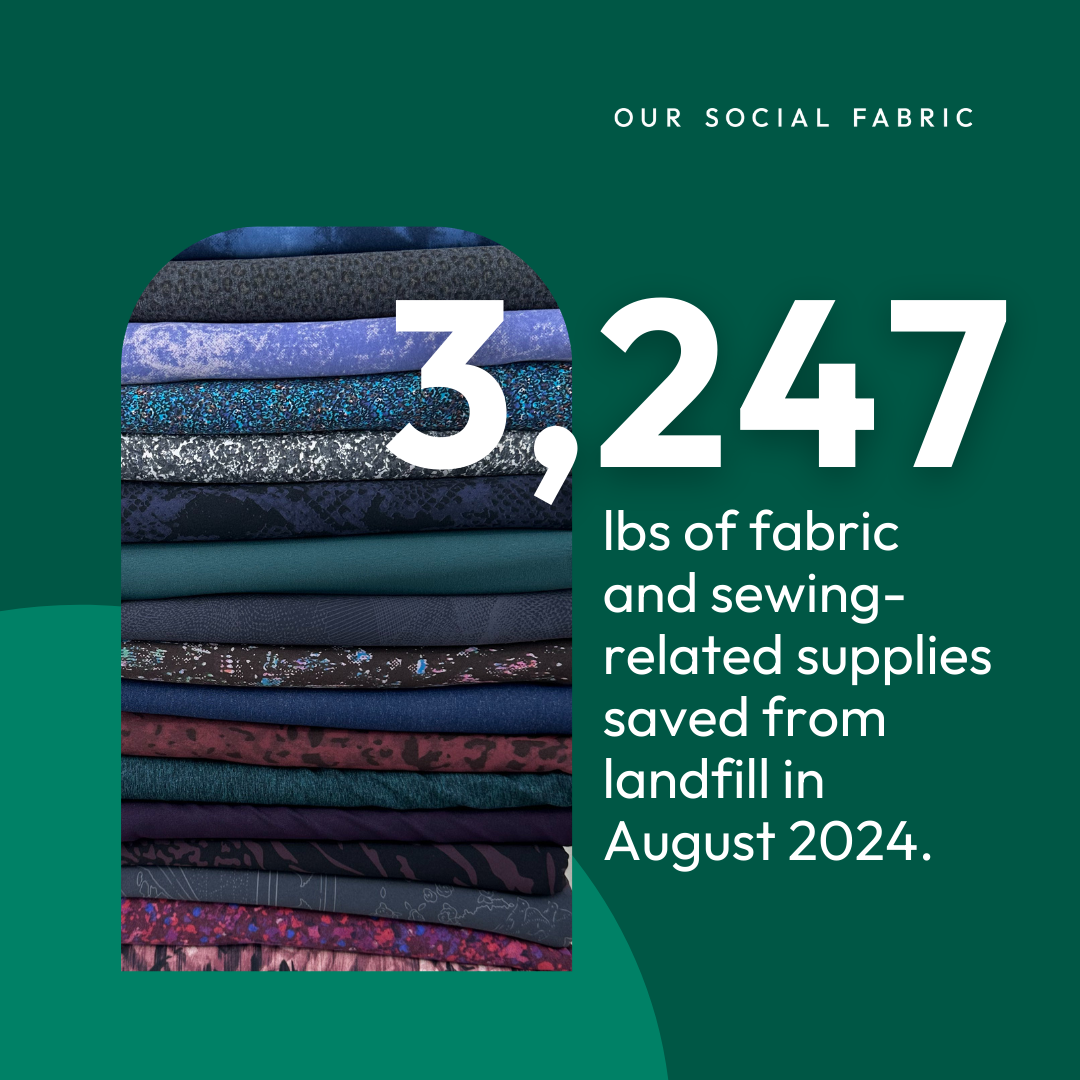Discover Chitosante Interlock
Discover Chitosante Interlock
Are you looking for a fabric that is antibacterial, odour-resisting, moisture-wicking, breathable, fast-drying, anti-static, pill resistant and has UPF 50?! Sounds like a big ask, but you’ll find all those benefits from using Chitosante Interlock.
In this blog post, we'll dive into what makes Chitosante Interlock so special and offer some tips on how to sew with this fantastic fabric.
What is Chitosante Interlock?
Chitosante Interlock is a high quality, lightweight athletic knit with four-way stretch. It has a fluid drape and smooth hand.
This innovative fabric is made from chitosan, a natural polymer derived from chitin found in crustacean shells. It is entirely safe for people with shellfish allergies because it is non-protein based. This unique material is not only eco-friendly but also boasts a range of impressive properties:
- Antimicrobial: Thanks to the chitosan, this fabric has natural antimicrobial properties, which helps to keep your garments fresher for longer.
- Breathable and Comfortable: The fabric offers excellent breathability, making it ideal for a wide range of clothing, from activewear to casual wear.
Why Choose Chitosante Interlock?
Chitosante Interlock is a fantastic fabric to work with. Its smooth texture and moderate stretch make it suitable for a variety of garment types, including dresses, tops, and pants. The interlock knit structure provides a stable, non-roll edge, making it easier to handle and sew compared to some other knit fabrics.
Sewing with Chitosante Interlock: Tips and Tricks
Sewing with Chitosante Interlock is a rewarding experience if you know a few key techniques. Here’s how to get the best results:
1. Choose the Right Needle
For lightweight Chitosante Interlock fabric, it’s best to use a ballpoint or stretch needle in the 70/10 or 80/12 size. Here’s why:
- Ballpoint or Stretch Needle: The rounded tip of a ballpoint or stretch needle is designed to push between the fibers of knit fabrics like interlock, rather than piercing through them. This reduces the risk of snags and holes, which is particularly important for delicate and lightweight fabrics.
- Size 70/10 or 80/12: The size of the needle should match the weight and thickness of the fabric. For lightweight interlock, a 70/10 needle is usually sufficient, but if you’re working with a slightly thicker version or if you find the fabric more challenging to handle, an 80/12 needle can also work well.
2. Use a Stretch Stitch
To maintain the fabric’s natural stretch and flexibility, use a stretch stitch or a narrow zigzag stitch on your sewing machine. This will allow the fabric to retain its shape and prevent seams from popping.
- Zigzag stitch: Set the stitch width to around 3-5mm and the stitch length to 1-2mm. The exact settings might vary depending on your machine and the specific fabric, so it’s a good idea to test on a scrap piece first.
- Stretch stitch (triple stretch stitch): This stitch is specifically designed for stretch fabrics. It often appears as a type of zigzag stitch but with three stitches forward and one stitch backward.
3. Avoid Stretching the Fabric
When sewing, avoid pulling or stretching the fabric too much. Let the machine do the work, and guide the fabric gently to prevent distortion and ensure a smooth finish. Consider using a walking foot…
4. Use a Walking Foot
A walking foot can help feed the fabric evenly through the machine, which is particularly useful for interlock fabrics that can sometimes shift or stretch during sewing.
5. Finish the Seams
To prevent the edges from rolling or fraying, finish your seams with a serger or a zigzag stitch. Chitosante Interlock tends to be less prone to fraying, but it’s always good practice to reinforce your seams.
6. Pre-Wash Your Fabric
Pre-washing your Chitosante Interlock will help to remove any residual dyes or chemicals and pre-shrink the fabric, ensuring that your finished garment maintains its size and shape after washing.
Conclusion
Ready to give Chitosante Interlock a try? Head over to our Performance Knits collection and discover the possibilities of this incredible material.
Feel free to share your Chitosante Interlock creations with us on social media—tag us and use the hashtag #OurSocialFabric so that we can see it!




Leave a comment
This site is protected by hCaptcha and the hCaptcha Privacy Policy and Terms of Service apply.